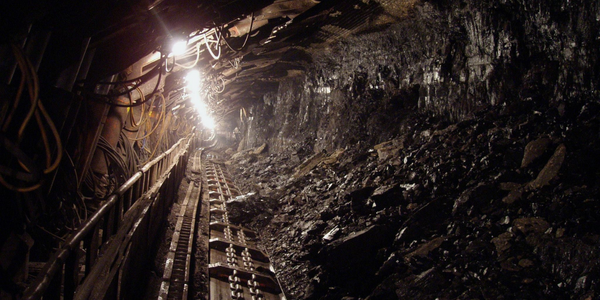Technology Category
- Analytics & Modeling - Process Analytics
- Functional Applications - Enterprise Resource Planning Systems (ERP)
Applicable Industries
- Education
- Mining
Use Cases
- Time Sensitive Networking
- Virtual Training
Services
- Training
About The Customer
Mars is the fourth largest private company in the United States, operating on a massive scale across various industries. The company's size and scope mean that it deals with a high volume of deductions in its Accounts Receivable process, which can quickly add up and impact the bottom line. Mars was seeking to reduce deduction inflow, increase recovery rates, and cut cycle times in its A/R process. To achieve these goals, the company needed a solution that could provide clear visibility into the causes and sources of deductions, as well as the ability to implement effective changes based on this insight. The challenge of managing this complex process fell to Nikki Nagel, Mars' Accounts Receivable Transformation Lead, who brought extensive experience in A/R roles to the task.
The Challenge
Mars, the fourth largest private company in the US, was facing a significant challenge in managing its Accounts Receivable (A/R) process. The company was dealing with a high volume of deductions, but lacked clear visibility into the causes and sources of these deductions. This lack of insight made it difficult to tackle and reduce the deductions effectively. The challenge was further compounded when Nikki Nagel was appointed as Mars Accounts Receivable Transformation Lead. Despite her extensive experience in A/R roles, she was unfamiliar with process mining and the Celonis Execution Management System (EMS), tools that could potentially help address the deduction issue. Mars had three primary goals: reducing deduction inflow, increasing recovery rates, and reducing cycle times. However, without a clear understanding of the root causes of the deductions and the necessary technological expertise, achieving these goals was a daunting task.
The Solution
To address these challenges, Mars turned to the Celonis Execution Management System (EMS). Nikki Nagel, despite her initial unfamiliarity with the system, invested time in learning about Celonis through its robust training platform. This allowed her to quickly gain a comprehensive understanding of the system and its capabilities. With this newfound knowledge, she was able to identify that the company's opportunity lay not just in how deductions were coded and identified, but also in the potential for automation to reduce manual deduction identification. This insight led to the implementation of intelligent automation, which significantly cut coding and rework time. Furthermore, Mars leveraged early successes with the Celonis EMS to drive adoption across the business. The company made a concerted effort to communicate the benefits of the system to the rest of the enterprise, emphasizing its ability to identify non-value adding tasks and improve overall execution. Through these efforts, Mars was able to make Celonis a part of its regular business operations.
Operational Impact

Case Study missing?
Start adding your own!
Register with your work email and create a new case study profile for your business.
Related Case Studies.

Case Study
Underground Mining Safety
The goal was to produce a safety system to monitor and support underground mining operations; existing systems were either too simple (i.e. phone line) or overly complex and expensive, inhibiting deployment, and providing little-to-no support in event of an accident. Given the dangerous nature of the mining work environment and the strict regulations placed on the industry, the solution would have to comply with Mine Safety and Health Administration (MSHA) regulations. Yet the product needed to allow for simple deployment to truly be a groundbreaking solution - increasing miner safety and changing daily operations for the better.

Case Study
Mining Firm Quadruples Production, with Internet of Everything
Dundee Precious Metal’s flagship mine, in Chelopech, Bulgaria, produces a gold, copper, and silver concentrate set a goal to increase production by 30%. Dundee wanted to increase production quality and output without increasing headcount and resources, improve miner safety, and minimize cost.

Case Study
Fastenal Builds the Future of Manufacturing with MachineMetrics
Fastenal's objective was to better understand their machine downtime, utilization, quality issues, and to embrace cutting-edge manufacturing technology/process improvement capabilities to bring their team to the next level. However, there was a lack of real-time data, visualization, and actionable insights made this transition impossible.

Case Study
Joy Mining Systems
Joy equipment faces many challenges. The first is machine integration and control. The business end of the machine has a rapidly-spinning cylinder with 6-inch diamond-studded cutting teeth. It chews through rock at rates measured in tens of tons per minute. The system grinds through the rock in front, creating a rectangular mine tunnel. Hydraulic lifters support the ceiling as the machine moves forward. Automated drills and screws drive 3-ft long screws into the ceiling to stabilize it. The rock and coal fall into a set of gathering "fingers" below the cutting cylinder. These fingers scoop up the rock and coal and deposit it onto a conveyor belt. The conveyor passes under the machine and out the back. A train of conveyor belt cars, up to a mile long, follows the cutter into the mine. The rock shoots along this train at over 400 feet per minute until it empties into rail cars at the end. Current systems place an operator cage next to the cutter. Choking dust (potentially explosive), the risk of collapse and the proximity of metal and rock mayhem make the operator cage a hazardous location.

Case Study
Revolutionizing Medical Training in India: GSL Smart Lab and the LAP Mentor
The GSL SMART Lab, a collective effort of the GSL College of Medicine and the GSL College of Nursing and Health Science, was facing a challenge in providing superior training to healthcare professionals. As clinical medicine was becoming more focused on patient safety and quality of care, the need for medical simulation to bridge the educational gap between the classroom and the clinical environment was becoming increasingly apparent. Dr. Sandeep Ganni, the director of the GSL SMART Lab, envisioned a world-class surgical and medical training center where physicians and healthcare professionals could learn skills through simulation training. He was looking for different simulators for different specialties to provide both basic and advanced simulation training. For laparoscopic surgery, he was interested in a high fidelity simulator that could provide basic surgical and suturing skills training for international accreditation as well as specific hands-on training in complex laparoscopic procedures for practicing physicians in India.

Case Study
IoT platform Enables Safety Solutions for U.S. School Districts
Designed to alert drivers when schoolchildren are present, especially in low-visibility conditions, school-zone flasher signals are typically updated manually at each school. The switching is based on the school calendar and manually changed when an unexpected early dismissal occurs, as in the case of a weather-event altering the normal schedule. The process to reprogram the flashers requires a significant effort by school district personnel to implement due to the large number of warning flashers installed across an entire school district.







